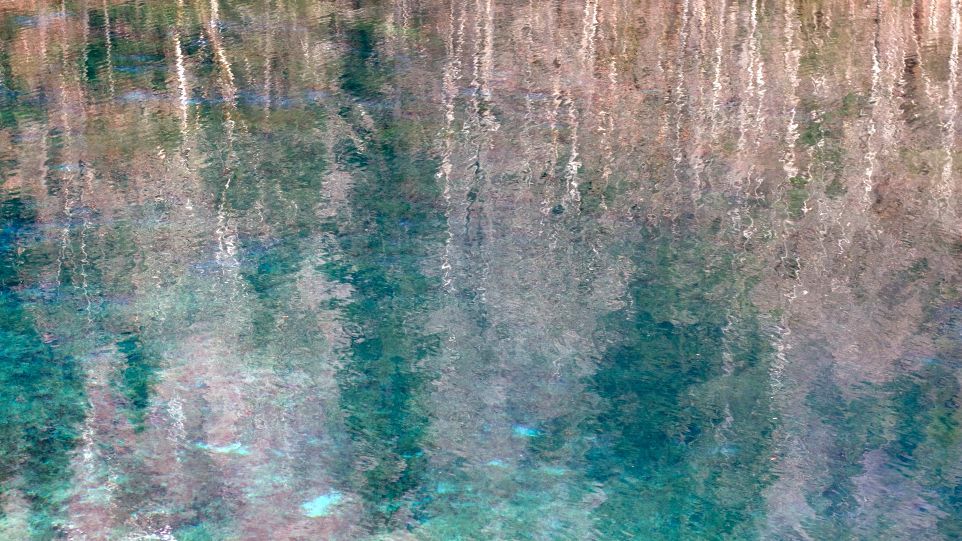
Self-purification capacity of lakes

Microorganisms help to keep the water of lakes clean. Researchers have now shown that this detoxification of ammonium is only sustained by an extremely small number of specific archaebacteria species.
02/06/2023 · HP-Topnews · Leibniz-Institut DSMZ-Deutsche Sammlung von Mikroorganismen und Zellkulturen GmbH · Leibniz-Institut für Gewässerökologie und Binnenfischerei · Lebenswissenschaften · Umweltwissenschaften · Forschungsergebnis
Microorganisms help to keep the water of lakes clean. In the process, they also detoxify the nitrogen compound ammonium, which is introduced into water bodies by fertilizers, for example, and is also produced naturally by metabolic processes. An international team led by the German Collection of Microorganisms and Cell Cultures (DSMZ) with IGB researchers Hans-Peter Grossart and Danny Ionescu has now shown that this detoxification of ammonium in the depths of European lakes is only sustained by an extremely small number of specific archaebacteria species.
Ammonium is a nitrogen compound that is toxic to aquatic life in high concentrations and contaminates drinking water sources. It is formed during decomposition of organic matter in the water column and also enters lakes and rivers as agricultural fertilizer from terrestrial areas in the catchment. Fortunately, the self-purifying power of water bodies exists in the form of countless microorganisms that break down ammonium. In the deep layers of nutrient-poor lakes with large bodies of water (such as Lake Constance and many other pre-Alpine lakes), archaebacteria perform this function. They convert ammonium to nitrate, which is then used to produce N2 nitrogen - a major component of air.
Only about one to 15 different species of ammonium-degrading archaebacteria in deep lakes worldwide
The researchers studied the biodiversity and evolutionary history of ammonium-oxidizing archaebacteria in deep lakes on five continents. They were able to show that the species diversity of these archaea in lakes worldwide averages only about one to 15 species. In European lakes, the dominant species is even highly clonal and has little genomic microdiversity. "This species poverty makes the self-purifying power of deep lakes potentially vulnerable to environmental change and contrasts with marine ecosystems where a much higher species diversity of this group of microorganisms prevails," explains Hans-Peter Grossart, co-author of the study published in the journal Science Advances.
Selection pressure from habitat change from sea to freshwater
The team also found an explanation for this species paucity: colonization of freshwaters always originated from marine habitats. However, due to the much lower salt concentrations in freshwaters, the archaea had to undergo major changes to their cell structure, which they only managed to do a few times during evolution. "This selection pressure probably prevented a broader diversity of ammonium-oxidizing archaea from colonizing freshwaters," says Danny Ionescu, another co-author of the study.
The researchers were surprised by the finding that the predominant freshwater species in Europe has hardly changed in the 13 million years since its occurrence and has spread quasi-clonally from Europe to Asia. The authors assume that low nutrients combined with low temperature of 4 degrees Celsius below the thermocline and some more limiting factors of the studied lakes prevents high growth rates and associated evolutionary changes.
Poor variety of species is a risk factor in changing environmental conditions under climate change
These archaebacteria are thus trapped in a state of low genetic diversity. Because the effects of climate change are more pronounced in freshwater than in marine habitats, which is associated with a loss of biodiversity, it remains unclear how the extremely species-poor and evolutionarily static freshwater archaea will respond to changes caused by global warming and overfertilization of agricultural land.
Further information and contact
Press release - Leibniz Institute of Freshwater Ecology and Inland Fisheries (IGB)